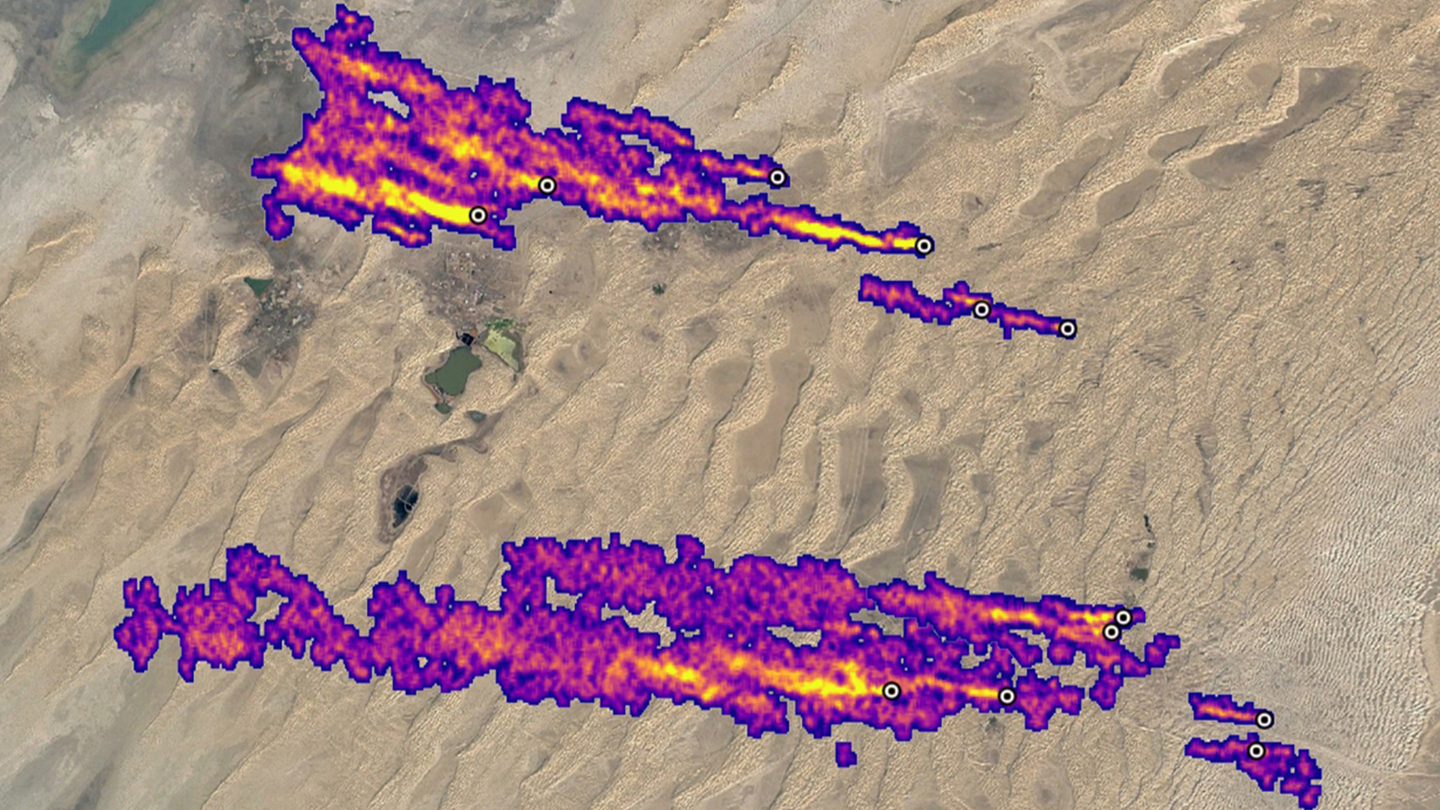Satellites traced super methane plumes to Turkmenistan’s gas fields
The two fields emitted a total of 403 million tons of carbon dioxide equivalent in 2022.

Satellite data reveals that methane leaks from two main fossil fuel fields in Turkmenistan caused more global heating last year than all of the carbon emissions in the United Kingdom. The satellite data was produced by French energy and environmental geo-analytics company Kayrros for the Guardian.
[Related: Methane is the greenhouse gas we can no longer afford to ignore.]
The data, as reported by the Guardian, shows that the western western fossil fuel field on the coast of the Caspian Sea in Turkmenistan leaked over 2.9 million tons (2.6 million metric tonnes) of methane in 2022. The eastern field emitted almost 2 million tons (1.8 million metric tonnes) during that timeline. Because methane is so much more potent than carbon dioxide, the two fields emit the equivalent of more than 403 million tons (366 million metric tonnes) of carbon dioxide, or more than the annual emissions by the United Kingdom. China and the United States are the largest emitters of CO2 in the world and the UK ranks at 17.
Methane is an incredibly potent greenhouse gas that is emitted during the production and transport of oil, natural gas, and coal. Emissions can also result from agriculture and livestock practices, land use, and the decay of organic waste in landfills, according to the US Environmental Protection Agency. In 2021, methane accounted for 12 percent of all greenhouse gas emissions from human activities in the US, which is especially concerning since it is 25 percent more effective at trapping heat than CO2.
Methane was officially added to the list of climate change priorities to address this decade by the United Nations Intergovernmental Panel on Climate Change in 2021. The amount of methane emitted by human activity has been underestimated in the past and emissions have surged in the past 15 years. A 2020 study by the University of Rochester found that levels of “naturally released” methane reported in the atmosphere were 10 times too high, and fossil fuel-based methane is actually about 25 to 40 percent higher than scientists previously predicted.
“The big take-home nugget for me is they said if you look at all the warming activity done by humans over the last century … carbon dioxide has contributed 0.75 degrees Celsius, while methane has contributed to 0.5 degrees Celsius,” Bob Howarth, a professor of ecology and environmental biology at Cornell University, told PopSci in 2021.
Previous reporting from the Guardian found that Turkmenistan is a top country for methane “super emitting” leaks and it is possible that switching from a process called flaring to venting methane might be behind the explosion in emissions. Flaring burns unwanted gas and adds CO2 into the atmosphere, but it is an easy process to detect and has been increasingly frowned upon. Venting releases the invisible methane into the air completely unburned and has been harder to track until more recent developments in satellite technology. Since methane traps 80 times more heat than CO2 over two decades, venting is far worse for the climate.
[Related: Everything you should know about methane as regulations loosen.]
“Methane is responsible for almost half of short-term [climate] warming and has absolutely not been managed up to now – it was completely out of control,” Kayrros president Antoine Rostand, told the Guardian. “We know where the super emitters are and who is doing it,” he said. “We just need the policymakers and investors to do their job, which is to crack down on methane emissions. There is no comparable action in terms of [reducing] short-term climate impacts.”
Turkmenistan is currently China’s second biggest supplier of gas and the country is planning to double its exports to China. Until 2018, Turkmen citizens received free gas and electricity, but the country is also incredibly vulnerable to the impacts of the climate crisis. The likelihood of severe drought is projected to increase “very significantly” over the course of this century, and crop yields are expected to fail.
The upcoming 2023 COP28 climate change conference in the United Arab Emirates is seen by some to be an opportunity for change in the region. One source told the Guardian that diplomatic efforts are being made to urge Turkmenistan to cut its methane emissions. “We are really hoping Cop28 is a forcing mechanism,” the source said.
